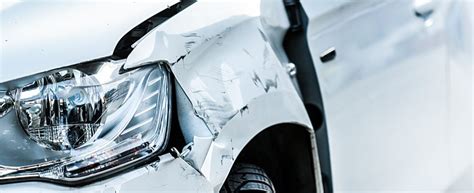Car Fender Repair: Hidden Costs to Watch Out For
Getting your car's fender repaired can be a stressful experience, especially when unexpected costs pop up. While the initial quote might seem reasonable, several hidden expenses can significantly inflate the final bill. Understanding these potential extra charges is crucial to avoiding financial surprises and making informed decisions about your repair. This guide will illuminate the often-overlooked costs associated with car fender repair, empowering you to navigate the process with confidence.
What is typically included in a fender repair quote?
Before diving into the hidden costs, let's establish a baseline. A standard fender repair quote usually covers the cost of labor to remove and repair or replace the damaged fender panel. This often includes:
- Assessment and Diagnosis: The initial inspection to determine the extent of the damage.
- Parts Replacement (if necessary): Sourcing and installing a new or used fender panel. The cost of the part itself is a major factor.
- Bodywork: This involves straightening bent metal, filling dents, and applying primer.
- Painting and Finishing: Matching the existing car's paint color and applying clear coat for protection.
- Reassembly: Putting everything back together, including reattaching trim pieces.
However, many repair shops don't explicitly include the following in their initial quote, leading to unpleasant surprises.
Hidden Costs in Car Fender Repair: A Comprehensive Guide
Several factors can significantly increase the final cost of your fender repair. Let's explore them in detail:
1. Additional Body Damage: What if it's more than meets the eye?
The initial assessment might not reveal all the damage. During the repair process, technicians may uncover hidden damage to underlying components like the bumper, frame, or even the wheel well. These unexpected repairs will add to the total cost. Always ask for a thorough inspection before agreeing to the work.
2. Rust Repair: The silent cost of corrosion.
If your car has rust damage, especially in older vehicles, the repair will take much longer and require specialized techniques. Rust removal and prevention treatment adds considerable expense to the overall cost, sometimes exceeding the initial estimate.
3. Paint Matching Challenges: Achieving a perfect color match.
Achieving a precise paint match can be difficult, especially for older cars or those with faded or custom paint jobs. The shop might need to mix custom paint, requiring additional time and materials, thus increasing the price.
4. Complexity of the Repair: Beyond simple dents and scratches.
The complexity of the damage will significantly affect the repair time and cost. Severe damage requiring extensive metalwork, welding, or specialized tools will cost considerably more than minor scratches or dents.
5. Labor Costs: Time is money.
Labor costs are often a significant portion of the total repair bill. The more extensive the damage, the more hours a technician will need to spend on the repair, increasing the labor charges. Be sure to clarify the hourly rate upfront.
6. Parts Sourcing: OEM vs. Aftermarket.
The cost of replacement parts can vary widely depending on whether you opt for Original Equipment Manufacturer (OEM) parts or aftermarket parts. OEM parts are typically more expensive but offer a better fit and quality. Aftermarket parts are cheaper but may not be as durable or aesthetically pleasing.
7. Administrative Fees and Taxes: The little extras.
Don't forget about administrative fees, sales tax, and disposal fees for old parts. These smaller charges can add up and contribute to the overall cost.
8. Rental Car Costs: Maintaining your mobility.
If your car is out of commission for several days, you may need a rental car. This cost is usually not included in the repair estimate.
How to Minimize Hidden Costs
- Get multiple quotes: Comparing quotes from different reputable repair shops is essential.
- Ask detailed questions: Clarify what's included and excluded in the quote.
- Thorough inspection: Insist on a thorough inspection to identify all damage.
- Specify parts: Specify whether you want OEM or aftermarket parts.
- Understand labor rates: Know the hourly labor rate before agreeing to the repair.
- Read the contract carefully: Review the contract carefully before signing.
By carefully considering these potential hidden costs, you can better anticipate the total expense of your car fender repair and ensure a smoother, less stressful experience. Remember that transparency and communication with your chosen repair shop are key to avoiding unexpected bills.

